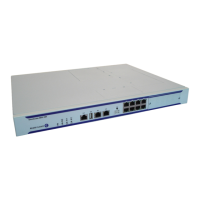VPLS Service Configuration Commands
Page 470 7750 SR OS Services Guide
In a VPLS service, MAC addresses are associated with a Service Access Point (SAP) or with a
Service Distribution Point (SDP). MACs associated with a SAP are classified as local MACs, and
MACs associated with an SDP are remote MACs.
Like in a layer 2 switch, learned MACs can be aged out if no packets are sourced from the MAC
address for a period of time (the aging time). In each VPLS service instance, there are independent
aging timers for local learned MAC and remote learned MAC entries in the FDB. The remote-age
timer specifies the aging time for remote learned MAC addresses. To reduce the amount of signaling
required between switches configure this timer larger than the local-age timer.
The no form of this command returns the remote aging timer to the default value.
Default remote age 900 — Remote MACs aged after 900 seconds
Parameters seconds — The aging time for remote MACs expressed in seconds.
Values 60 — 86400
send-flush-on-failure
Syntax [no] send-flush-on-failure
Context config>service>vpls
Description This command enables sending out “flush-all-from-ME” messages to all LDP peers included in
affected VPLS, in the event of physical port failures or “oper-down” events of individual SAPs. This
feature provides an LDP-based mechanism for recovering a physical link failure in a dual-homed
connection to a VPLS service. This method provides an alternative to RSTP solutions where dual
homing redundancy and recovery, in the case of link failure, is resolved by RSTP running between a
PE router and CE devices.
This feature cannot be enabled on management VPLS.
Default no send-flush-on-failure
service-mtu
Syntax service-mtu octets
no service-mtu
Context config>service>vpls
Description This command configures the service payload (Maximum Transmission Unit – MTU), in bytes, for
the service. This MTU value overrides the service-type default MTU.
The service-mtu defines the payload capabilities of the service. It is used by the system to validate
the SAP and SDP binding’s operational state within the service.
The service MTU and a SAP’s service delineation encapsulation overhead (i.e., 4 bytes for a dot1q
tag) is used to derive the required MTU of the physical port or channel on which the SAP was created.
If the required payload is larger than the port or channel MTU, then the SAP will be placed in an
inoperative state. If the required MTU is equal to or less than the port or channel MTU, the SAP will
be able to transition to the operative state.

